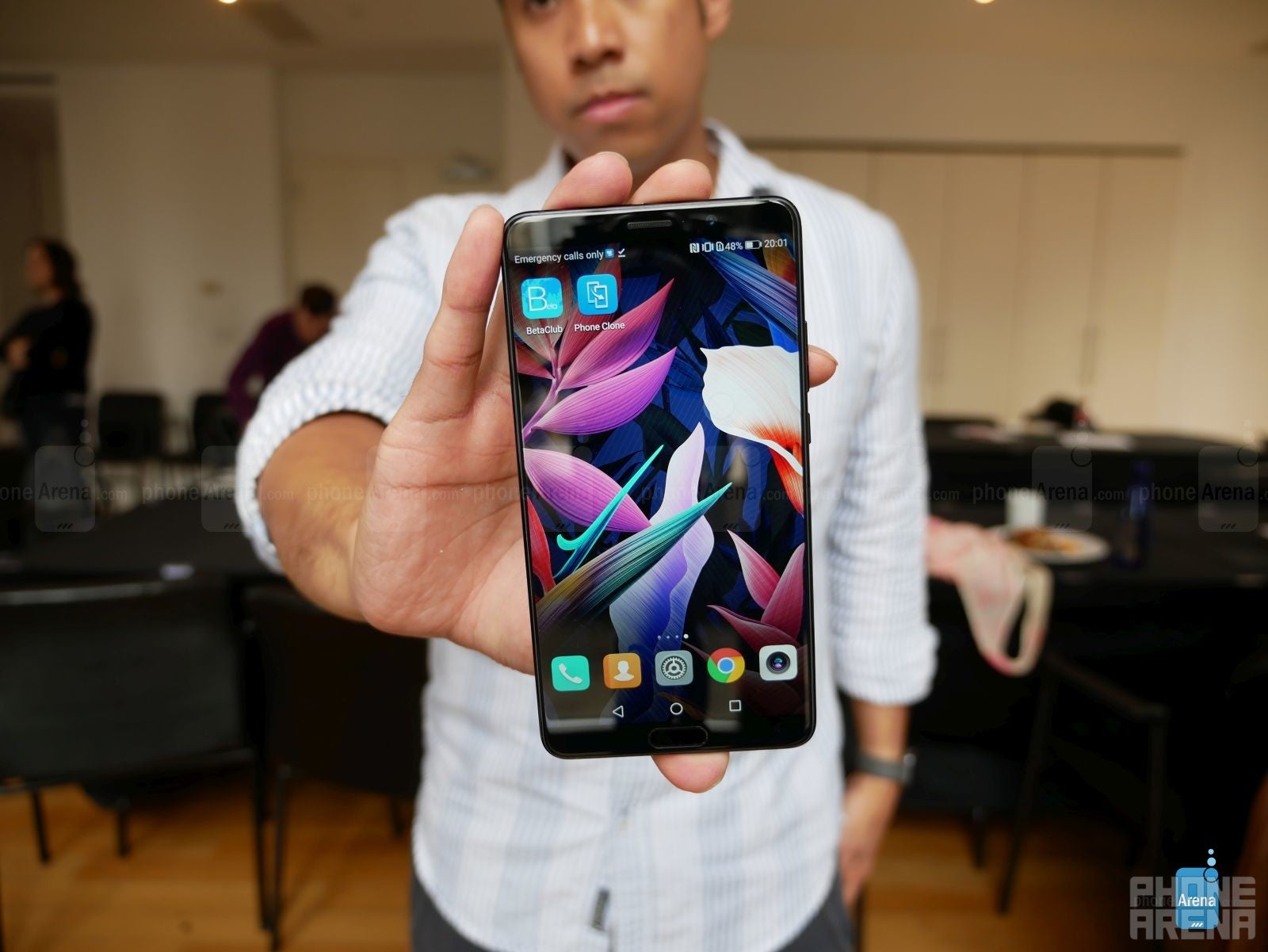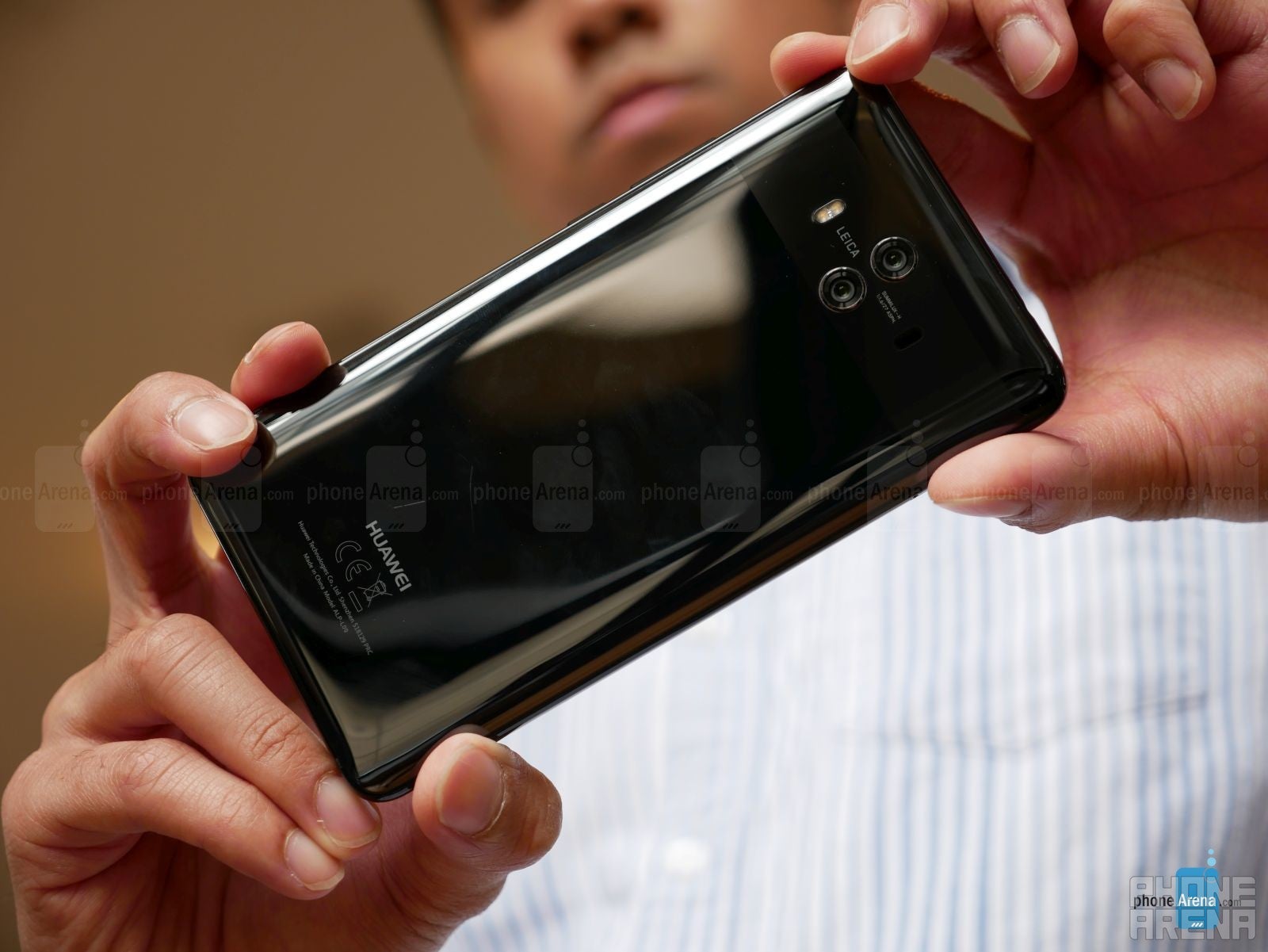Huawei Mate 10 hands-on: Stepping up its game to flagship level

Huawei's strategy is a strange one here in the US, they're very selective with what devices end up being sold in stores or online. Its flagship smartphone this year for instance, the Huawei P10, isn't as readily available as its rivals. Instead of the P-series being the driving force here stateside, it's been left to the Mate series to compete – and that's been the case since the Mate 8 quite honestly!
Interestingly enough, its upcoming smartphone in the Huawei Mate 10 sees some radical changes that could arguably assert the Mate series as the cream-of-the-crop from Huawei's camp. That should be good news for those that have waited out so far this year from picking up a flagship, as the Mate 10's announcement comes on the heels of its contemporaries. Radical is one word that might sum up the Mate 10, but it'll need to be utterly amazing to stand a chance in this already crowded space.
That so-called radical shift stems from the new design language it's following, one that might be perceived by some as jumping on the trend. Gone is the all-metal design of the Mate 9, replaced instead with an all-glass body that features this multi-axis curved design. No doubt it looks fantastic, especially with that signature stripe in the rear to give it some distinction, but this is something we've seen countless times before. From the Galaxy S8 earlier in the year, to the LG V30 and new iPhones, glass seems to be the material of choice for most.
Making it more in line to a true flagship phone, we're happy to report that the Mate 10 sees a bump up in its display resolution. Previously, it was only 1080p resolution with the Mate 9, but its successor here in the Mate 10 goes up to a 5.9-inch 2560 x 1440 FullView LCD display. We have no complaints from what we can see so far in the display, as it delivers some rich color tones and wide viewing angles – the hallmarks of the display technology.
Due to the fingerprint sensor situated below the display, it doesn't achieve the almost bezel-less appearance we see in other flagships. It's still a sharp looking screen with some great qualities about it, like the tiny bezels to the left and right of the screen, but it's difficult to say if it has enough to make it any better than others presently out there.
Design
That so-called radical shift stems from the new design language it's following, one that might be perceived by some as jumping on the trend. Gone is the all-metal design of the Mate 9, replaced instead with an all-glass body that features this multi-axis curved design. No doubt it looks fantastic, especially with that signature stripe in the rear to give it some distinction, but this is something we've seen countless times before. From the Galaxy S8 earlier in the year, to the LG V30 and new iPhones, glass seems to be the material of choice for most.
That's not a bad thing per se, but the decision to go with it means that the Mate 10 feels a bit more fragile than its predecessor – plus, it's a fingerprint magnet. Still, we love how light bounces off its surfaces, while those sloping edges give it a pleasant feel in the hand. It's a bit wider than we'd like, but it's especially worth noting that there's a 3.5mm headphone jack here. What's oddly strange, though, is that it doesn't feature any sort of water-resistance construction.
Display
Making it more in line to a true flagship phone, we're happy to report that the Mate 10 sees a bump up in its display resolution. Previously, it was only 1080p resolution with the Mate 9, but its successor here in the Mate 10 goes up to a 5.9-inch 2560 x 1440 FullView LCD display. We have no complaints from what we can see so far in the display, as it delivers some rich color tones and wide viewing angles – the hallmarks of the display technology.
Due to the fingerprint sensor situated below the display, it doesn't achieve the almost bezel-less appearance we see in other flagships. It's still a sharp looking screen with some great qualities about it, like the tiny bezels to the left and right of the screen, but it's difficult to say if it has enough to make it any better than others presently out there.

User Interface
There's a reason why Huawei skipped a few numbers with the software. First and foremost, the Mate 10 is running the company's latest software experience, EMUI 8.0, which supposedly skipped a few numbers in the process to keep it in line with the release of Android 8.0 Oreo. So yes, it's running Oreo right from the get-go, which is fantastic news given that there won't be any wait needed for it!
In addition to the cleaner, more simplified looking user interface, Huawei is focusing its efforts on local machine learning. By this, we mean that the phone is becoming more self-aware in the way that it can make predictions. For example, if you're reading something and it's late at night, EMUI 8.0 will offer the recommendation of lowering the brightness and changing it to night-time mode to make reading easier on your eyes. This is one of several scenarios that Huawei has developed, but the outcome is a phone with awareness.
Processor and Memory
Introduced about a month ago at IFA 2017, the Huawei Mate 10 leverages the company's in-house Kirin 970 chipset, coupled with 4GB of RAM. On the surface during our quick hands-on, the phone exhibited all the instant responses you'd want to find in a high-end phone, but much like most things, it'll be interesting to see if it'll be able to maintain that consistency after months of use.
Huawei goes on to tout how the Kirin 970 represents a new age in processing, as they frequently go on to proclaim it as the world's first dedicated "neural processing unit." This NPU of sorts is what drives the machine learning on the phone with the software experience, always learning and adapting from your habits. It's intriguing to say the least, especially when Huawei goes on to say that there are infinite possibilities with the phone.
Camera
Before we saw the craze of dual-camera systems becoming prevalent this year, the Mate 9 was one of the few late last year to adopt the implementation – so it's no surprise that it's back again better than ever! This time, it's paired with new Leica dual Summilux-H lenses, broken down to 12MP RGB + 20MP monochrome sensors, which combined deliver a wide aperture of f/1.6. There is OIS, but it's only with the RGB sensor! Topping it off, it employs a new 4-in-1 hybrid focus and zoom system.
The specs are drool worthy to say the least, while the dual-system camera means it'll deliver the bokeh effects with portrait shots we all know and love. However, what was more intriguing during our hands-on time is the intelligent photography brought on by the phone's AI-powered real-time scene and object recognition. The phone analyzes the scene and accordingly selects the best scene modes. For example, it'll increase the saturation level for food shots, emphasize the shades of green with plant photos, and much more.
Photography has been a focal point for many cameras announced in the last couple of months, but we're eager to see how the Mate 10 compares against the competition. On paper, it seems like a powerhouse, but it'll need more than a solid arsenal of camera hardware to really rise above the rest that follow the same dual-camera recipe. If it can wow in low light, meticulously blur out background elements with portraits, and offer incredible video quality, it'll have a chance in becoming king.

Battery
Impressively, Huawei didn't skimp out on the phone's battery. In looking around the landscape, the Mate 10's 4000 mAh battery cell seems like a monster – especially on a flagship scale. That places it well ahead most of its contemporaries, so we can expect to garner longevity like no other. Meanwhile, Huawei claims that its supercharge technology will deliver approximately 58% of battery life with 30 minutes of charging. The only thing missing here to complete the trifecta is wireless charging.
Expectations
Available in four colors, black, mocha brown, champagne gold, and pink gold, the Huawei Mate 10 is also notable for the fact that it'll be dual-SIM with support for LTE in both slots, as well as cat 16 gigabit LTE. Forging a totally new identity, the Mate 10 seems like a strong finish for the Chinese company's end-of-the-year push. It's competing with some heavy hitters in the space, like the Samsung Galaxy Note 8, LG V30, new iPhones, and new Google Pixels, so it'll be interesting to see how it can prove to be successful.









Things that are NOT allowed: